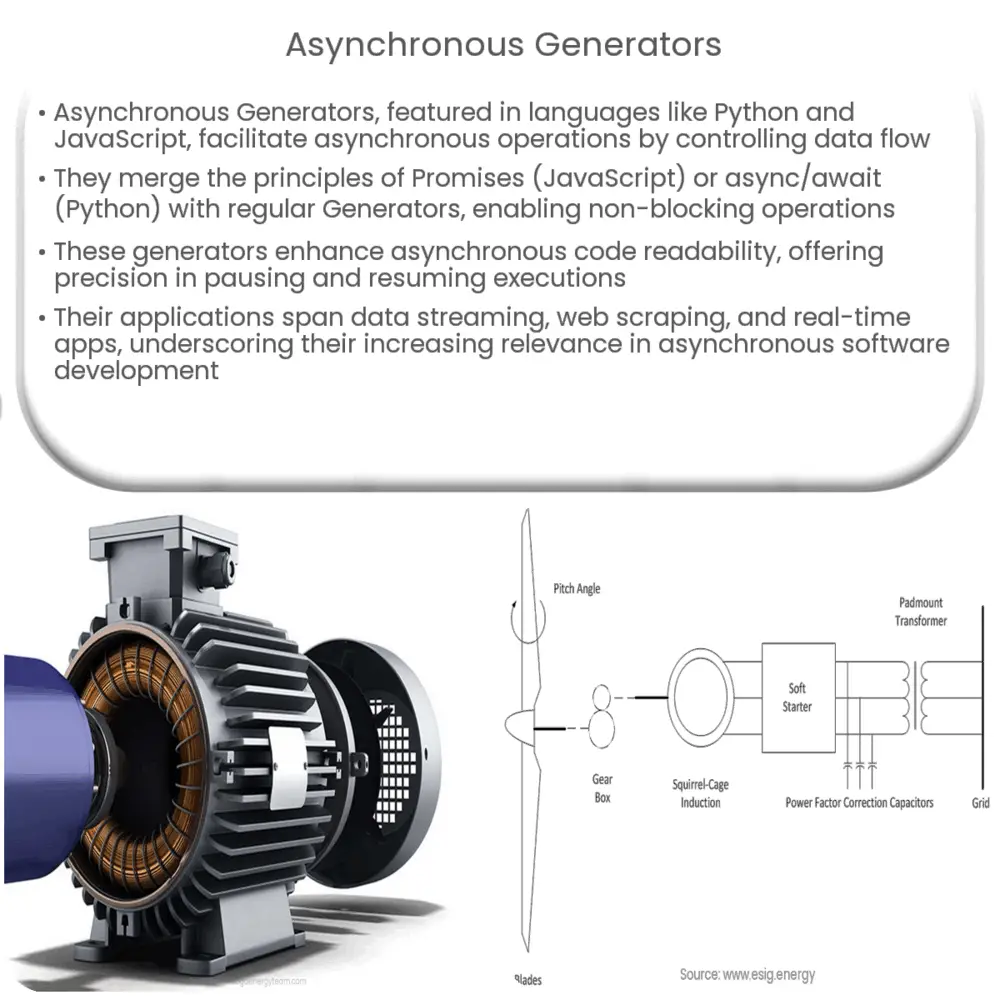Dive into the world of Asynchronous Generators in JavaScript and Python, their advantages, real-world applications, and role in future programming.

Introduction to Asynchronous Generators
Asynchronous Generators are a unique feature of modern programming languages like Python and JavaScript that are designed to handle asynchronous operations. These powerful tools provide a means to manage and control the flow of data in an asynchronous context.
Understanding Generators
Before delving into asynchronous generators, it’s crucial to understand what generators are. Generators, in simple terms, are special types of functions that allow you to declare a function that behaves like an iterator. They allow the generation of a sequence of results instead of a single value. When called, it returns an object (iterator) but does not start execution immediately. The subsequent method calls are responsible for resuming the execution where it was left off, allowing it to produce series of results instead of computing them at once and holding them in memory.
The Need for Asynchronous Generators
With the rise of the internet and large data-driven applications, dealing with asynchronous code has become inevitable. Regular generators, while incredibly efficient for their purpose, fail to efficiently handle situations where asynchronous operations are necessary. The key challenge being that the ‘yield’ keyword in regular generators is not ‘promise’ aware, and hence can’t handle promise-based asynchronous operations.
How do Asynchronous Generators Work?
Asynchronous Generators blend the concept of Promises (in JavaScript) or async/await (in Python) with regular Generators. This marriage of concepts allows you to ‘yield’ a Promise (or any asynchronous operation), and resume the generator when that Promise resolves. It essentially converts your synchronous, blocking generator into a non-blocking, asynchronous one.
- Asynchronous Generators in JavaScript
- Asynchronous Generators in Python
In JavaScript, an asynchronous generator function is declared with the async and generator (*) keywords. When called, these functions return an object that conforms to both the AsyncIterator protocol and the Iterator protocol.
In Python, asynchronous generators were introduced in Python 3.6 as a part of the new async/await syntax. They are defined like normal generator functions, but with the async def syntax instead of just def.
Advantages of Asynchronous Generators
One of the biggest advantages of asynchronous generators is that they make asynchronous code easier to write and understand. When dealing with asynchronous tasks, asynchronous generators allow your code to appear like it’s running synchronously, while still executing asynchronously behind the scenes.
Additionally, they offer more control over the execution of the program. By using ‘yield’ statements, you can precisely control when to pause and resume the execution of the generator, effectively reducing the complexity of callback or promise-based code.
Real-World Applications of Asynchronous Generators
- Data Streaming
- Web Scraping
- Real-time Applications
Asynchronous Generators are a perfect fit for handling data streams, where data arrives sporadically over time. They allow processing of data as soon as it arrives, rather than waiting for the entire data set to be available.
Web scraping often involves sending numerous requests and handling their responses. Asynchronous Generators help in maintaining a clean and efficient codebase by allowing you to pause the execution while waiting for the network response, and then resume once the data is available.
Real-time applications such as chat apps, real-time analytics, or any application that deals with live updates can greatly benefit from Asynchronous Generators due to their ability to handle asynchrony efficiently.
Conclusion
In conclusion, Asynchronous Generators are powerful tools that offer a more intuitive and efficient way to deal with asynchronous code. By abstracting away much of the complexity of asynchronous programming, they not only simplify the development process but also help to create a cleaner, more readable codebase. As the landscape of software development continues to evolve and shift towards more asynchronous, non-blocking architectures, the significance and utility of asynchronous generators are likely to grow exponentially.



